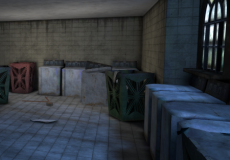

Waterpark Simulator
Advertisement
Waterpark Simulator is a management game centered on creating and operating a functioning waterpark environment. The player begins with a blank area and a limited set of tools for construction. From there, the park gradually takes shape through choices involving layout, structure, and organization. The focus is on how different elements interact — slides, pools, pathways, and services must align to keep operations stable. The objective is not speed but efficiency: each addition affects maintenance costs, visitor flow, and performance of existing systems.
Advertisement
Similiar games
Waterpark Simulator is a management game centered on creating and operating a functioning waterpark environment. The player begins with a blank area and a limited set of tools for construction. From there, the park gradually takes shape through choices involving layout, structure, and organization. The focus is on how different elements interact — slides, pools, pathways, and services must align to keep operations stable. The objective is not speed but efficiency: each addition affects maintenance costs, visitor flow, and performance of existing systems.
Building and Configuration
The construction process in Waterpark Simulator follows a modular structure. Players can add and modify components one by one, testing how each fits within the larger layout. Placement and angle matter because the path of movement between attractions defines crowd distribution and waiting times. Environmental details, such as lighting and surface texture, influence visibility and navigation. Each project can be adjusted or removed without penalty, encouraging experimentation with design and scale.
Core management systems include:
· Ride creation and structural editing
· Guest tracking and satisfaction levels
· Resource allocation for staffing and repairs
· Financial balance between costs and income
· Maintenance cycles for long-term durability
These interconnected systems ensure that changes in one area have visible results in others. For example, raising maintenance budgets increases reliability but limits expansion speed. Managing these dependencies forms the backbone of the gameplay loop.
Park Operations
Once the park opens, the focus shifts from construction to supervision. The player monitors guest behavior, equipment performance, and financial flow. Guests move dynamically, responding to comfort, accessibility, and waiting time. Staff members follow schedules that can be adjusted according to demand. Failures in coordination, such as unmonitored slides or unclean areas, quickly affect reputation. The balance between attention to detail and long-term stability defines the success of the operation.
Development and Scaling
As the park expands, new systems emerge. Larger parks introduce scheduling complexity, increased maintenance intervals, and more opportunities for mechanical issues. Players must periodically redesign layouts or redistribute staff to maintain order. Some updates add new rides and service features, requiring additional planning. Growth is measured in physical size and in operational stability — the ability to sustain the park without constant intervention.
Discuss Waterpark Simulator




















